Bruckner’s Golden Arches
William Carragan
Contributing Editor, Anton Bruckner Collected Edition, Vienna
Vice-President, Bruckner Society of America
Contributing Editor, Anton Bruckner Collected Edition, Vienna
Vice-President, Bruckner Society of America
A paper delivered at the Third Bruckner Journal Readers’ Conference
University of Nottingham, Nottingham, England, April 26, 2003, revised 2017

Brucknerorgel im Stift St. Florian – Photo by Renate Dodell via Flickr
Introduction
By 1879 Bruckner had completed the first of his two symphonic tetralogies, written without interruption starting in 1871, and carried out a further process of revision to all four of its members as well as to the earlier First Symphony and the Mass in F Minor. But during that time, there had been only three performances of any of his symphonies, all conducted by the composer: two successful ones of the Second, and one disastrous one of the Third in one or another of its many versions. Although there doesn’t appear to be any direct evidence for it, Bruckner must have realized that he could not continue in this way writing symphonies each one of which was twenty percent more ambitious than its predecessor. Instead, he turned to a more modest genre, in which the basic compositional tasks would be simpler, where he could develop further structural and formal ideas usable in future works that might not be larger, but would in other ways be more sophisticated.
The result was the viola quintet in F major, and the most prominent and easily-perceived innovative formal element employed thereBprobably for the first time chronologically in his workBis the arch structure which can be readily heard in the finale. We can define an arch most simply as the thematic recurrence A, B, C, B, A. This excludes the simple song-form, whether three-part (A, B, A) as in the slow movements of the Study Symphony and the First Symphony, or five-part (A, B, A, B, A) as in most of the other slow movements; it is essential that there be at least two two-sided balancing members and a thematically distinct center section to give the impression of a true arch. At the same time, the arch, if the correspondence between the two sides of each member is exact, is essentially static, in contrast to the highly dynamic, evolutionary process of the traditional sonata form. The arch must therefore be a background, like a literary conceit, within which the usual thematic development of a symphonic movement can still take place.
I am reminded of J.R.R. Tolkien’s epics, The Hobbit and The Lord of the Rings, in which the respective protagonists, Bilbo and Frodo, make a lot out of returning to their native land after their adventures. However, in each case the subject’s character is changed profoundly during the course of the story, so much so that neither of them can find a permanent home in his old diggings. Instead they both eventually pass over sea to the uttermost West, of which before their exploits they had had hardly any idea at all. Similarly we expect in a Bruckner symphony that in one way or another, when the arch is completed, a great transformation, or a transforming change in viewpoint, shall have taken place.
The Finale of the Quintet
This, probably the first of Bruckner’s arch forms, is also the most classic. Thus the form is strictly A, B, C, B, A, and the arch encompasses the entire movement. Three performances were studied for this paper, by the Koeckert Quartet, the Kocian Quartet, and the Vienna Quintet. As the diagram shows, the balance of the main structures is extremely close in all three performances.
Viewgraph 1: Quintet, arches
The C theme in the center is in five short sections, of 16, 10, 16, 8, and 8 measures, with a six-measure reference to the B theme between the third and fourth. This reference to B is itself a mini-arch, consisting of two measures with the theme upright, two measures inverted, and two measures upright again; this is the keystone of the arch. Although the mini-arch is not centered in terms of measure count, Bruckner requests a slower tempo for the last two sections of the C group, thus moving the keystone closer to the true center in terms of elapsed time. In this respect the performance by the Kocian Quartet is particularly observant of Bruckner’s wishes.
Bruckner wrote a slightly grander ending for the publication than in the manuscript, perhaps coming to realize by stages that the completion of an arch form cannot by itself satisfy the listener as the closure of the movement. Yet the F major coda, either in its manuscript or its published form, in balancing an initial theme in the flatted supertonic (G flat, the tonality of the preceding slow movement), still embodies a profound metamorphism in that respect alone.
Listen on YouTube
Anton Bruckner, String Quintet in F major
The Finale of the Seventh Symphony
The finale of the Seventh is also an arch structure, a bit more elaborate than that in the Quintet since it has to include a full exposition, development, and recapitulation of the usual ingredients of a Bruckner finale.
These diagrams are made with respect to measure number along the x-axis for comparison with the score. The upper diagram shows the ingredients of the form: A, B, C, development, C, B, A, coda. The letter K refers to the codetta (derived from the A theme) at the end of Part I, the classical exposition. The center of the arch comprises the codetta and development, placing an eerie inverted form of A just after the keystone. The arch form is made particularly evident because in this movement C is really a loud version of A, and the inverted order of the recapitulation makes sense to the listener even if the arch form is not initially detected. Notice that K, derived from A, can plausibly balance the later inverted A in the keystone area, where, as in the Quintet, the music achieves the maximum of mystery and remoteness. The diagram also applies the golden section to the movement, showing that the ratio of Part I (the exposition) to Part II (the development, is closely 1.618. This movement comes closer than any other of Bruckner’s to fulfilling that much-discussed criterion.
This identity between C and A makes it possible to draw individual arches for the exposition and recapitulation, shown superimposed on the whole-movement arches in the lower diagram. The recapitulated forms of C and A are heavily developed, giving a fully symphonic sense of evolution through the movement. The coda, one of Bruckner’s classic crescendos, lies outside the arch and forms a thunderous resolution to the hour-long symphony. In all these respects the symphonic concept of the finale of the Seventh is far more ambitious than that in the Quintet, but surely it was of help to Bruckner in creating this bold and challenging movement to have worked with the idea already. The six ritardandos or ritenutos in the A theme, which make the correspondence between that jaunty, angular theme and the mighty, ponderous C theme much more convincing, are shown with arrows at the bottom. These ritardandos are given in the first publication. Most of the tempo information in the first publication was suppressed by Haas and only partially reintroduced by Nowak; Nowak includes the ritardandos, but does not give the metronome markings for the surrounding passages. Both recordings heard here, Klemperer Vienna Symphony 1958 and Max Rudolf Cincinnati 1966, take wonderfully deep ritardandos. Every time I hear the work of a young director who omits the ritardandos for one reason or another, I sense an opportunity missed.
In this next viewgraph, the upper diagram shows the form as heard in the Klemperer performance in 1958 in which he conducted the Vienna Symphony in the Musikverein (which seems anomalous), and the lower one shows the Max Rudolf Cincinnati performance of 1966 on Decca.
Viewgraph 2: Seventh: Klemperer and Rudolf
In both cases the horizontal axis is time according to the performance, not measure number; the time coordinate is more reflective of what is heard since the tempos of the three themes, explicitly given in the first publication, are not intended to be the same. Both of these excellent performances from the old style of music making show throughout the symphony a strong influence from the tempo specifications of the first publication. Notice the lesser proportion of time spent in the B theme (yellow) by Rudolf.
Here a very slow performance, Celibidache Munich 1994, is compared with a very fast one, Ormandy Minneapolis 1935.
Viewgraph 3: Seventh: Celibidache and Ormandy
The bloated tempos and feeble, mannered articulations of the Celibidache version still do not destroy the arch, even though the time spent in the B theme seems interminable on audition. By contrast the fleet Ormandy reading, not perhaps the strongest aspect of this very early and interesting recording, still shows the arch quite well.
Here are two performances, one by David Alan Miller conducting my hometown group, the Albany Symphony, and the other by Benjamin Zander conducting the semi-professional Boston Phil-harmonic, both from November 2000.
Viewgraph 4: Seventh: Miller and Zander
I served as advisor in the preparation of both performances, the paper I wrote for Nottingham 1999, Those Pesky Ritardandos, being of great help in convincing these two quite individual maestri to take my advice on many aspects of interpretation. Accordingly, a real attempt was made by both conductors to replicate the tempos of the first publication, the result being that visually it is very difficult to see the difference between them even though the performances sound quite distinct. I recall that shortly before the Zander performance one of the percussionists approached me for advice, saying that he had no idea what to do. It was he who was to be responsible for the triangle entrance at measure 177 in the Adagio. I asked if he knew when to come in, and he admitted that he did. I said: “Get the three biggest triangles you can find, and the three biggest beaters that you can find. When that moment comes, make as much noise as you can for four seconds by the clock, and sit down. You will have earned as much money as the concertmaster.” The notion that the percussion in this movement is inauthentic, invented by Haas in 1944, is obsolete.
The Te Deum
The Te Deum also has an arch, clearly defined for even the most casual listener by the two similar solo passages (Te ergo quæsumus and Salvum fac populus), enclosing the words Æterna fac cum sanctis tuis in gloria numerari (“Make them to be numbered with your saints in glory everlasting”; this is the original end of Nicetas’s hymn).
Viewgraph 6: Te Deum, arches
The primitive C major/minor texture of the opening is balanced after the solos by a similar but much briefer passage setting the words Per singulos dies benedicimus te (“Day by day we bless you”, Psalm 145:2), and the entire section devoted to the words In te, Domine, speravi, non confundar in æternum (“In you, O Lord, I have hoped; let me never be confounded”, Psalm 31:2) lies outside the arch form. But in another sense, this final five minutes of the Te Deum can be considered to be balanced by the whole opening section through Iudex crederis esse venturus (“We believe that you will come to be our judge”) which is only a little longer. At any rate, the mood inspired in the listener evolves just as certainly in this piece as it does in any symphonic movement Bruckner wrote.
It is doubtful that Bruckner knew that the text we now know as the Te Deum is not all from the same period, the petitions from Salvum fac onward having been added to the original hymn attributed to St. Nicetas of Remesiana in Dacia, who lived from about 340 or 350 to after 414, at a later time. Nor, if he had known, do I think he would have cared enough to reflect it in his music; to him the liturgical text as accepted by the church for well over a thousand years would all need to be treated equally. The fact that Bruckner placed the join between the hymn and the petitions immediately after the keystone is probably to be ascribed to the similarity of accent between the half-lines Te ergo quæsumus and Salvum fac populum and the individual words sanguine and benedic, which seems to have cried out to him for similar musical expression.
The final words, non confundar in æternum, although set by Bruckner to triumphant music, are not really triumphal but humble and supplicatory. In this respect Bruckner’s Te Deum might appear not as appropriate to liturgical use as, say, his masses where the setting of the words Agnus Dei, qui tollis peccata mundi, dona nobis pacem, received hushed, devotional treatment consistent with the mood of the communion service at the time when they are to be sung. However one must remember that the Te Deum’s most socially-prominent use was not so much as the concluding canticle of Nocturns, sung in a monastery in the middle of the night, but instead as a hymn of thanksgiving which could easily be a great public occasion requiring themost impressive music one could bring forward. Once again the arch structure shows how Bruckner was able to balance his treatment of the simple concluding distich with almost the entire original hymn, the many words proclaimed at the beginning expressing the magnificence of the faith, but the few words repeated over and over at the end being closest to the hearts of the people at prayer.
(St. Nicetas or Niketa, bishop of Remesiana in Dacia, today Bela Palanka, southeast of Nis in Serbia, friend of Paulinus of Nola, was consecrated about 370, and remained in the office of bishop until his death. He dedicated himself to spreading the faith in this most difficult region which Rome was seldom able to control. The Te Deum, not being strophic like the contemporary work of Prudentius but rather partaking of the style of the Gloria in excelsis, was a most unusual expression of religious poetry for the time.)
The Finale of the Sixth
The individual arches of the Seventh show that we should expect to see other arch forms expressed as smaller ingredients of movements. For example, the Sixth offers one as the exposition of the finale. In it the latter part of the first theme group balances with the early part of the third theme group rather obviously, and the opening idea of the first group and the second idea of the third group also balance, but much more subtly.
Viewgraph 7: Sixth, finale, first theme group
In the first theme group, the sinuous, mysterious A1 is followed by a pair of themes, A2a and A2b, repeated in different form as A3a and A3b, while in the third group, C1 is clearly an inverted and augmented version of A2b or A3b. The similarity of A1 and C2 is not nearly as clear and some might be inclined to reject it. But consider: the opening contours are quite close, where in C2 the first notes of the melody are G F E F with F in the bass, while in A1 the first notes are F E D E with E in the bass.
The B theme is in the middle of the arch, with two statements of B1 framing a dialogue at the keystone between two other themes, the second (C3) being a quotation from Tristan, which Bruckner weaves into his counterpoint utterly naturally.
Once these likenesses are accepted it is possible to make a diagram.
Viewgraph 10: Sixth, arches
The upper diagram reflects the functional role of the various sections, with red and orange representing the first theme group, yellow and green the second, and cyan and blue the third. The lower diagram indicates the situation with the identifications of A1 with C2 and A2-A3 with C1, the B theme still being framed in the middle.
The Ninth Symphony
The first four melodic ideas of the exposition of the Finale of the Ninth are also disposed in arch structure. These are A1, balancing with Bk which is its literal inversion, and A2, balanced by B1 which is a development of it. If there is a keystone, it is the solemn trombone chords at the end of the first theme group which look forward to the great brass chorale which lies outside the arch.
Viewgraph 11: Ninth, finale
There is also a mini-arch in the first part of the second theme group (Gesangsperiode). Here the first ten measures of the B theme, beginning with three statements of the basic thematic motive derived from A2, are followed by a six-measure interlude, and then there are ten further measures also beginning with three statements of the motive. The six-measure interlude is only indicated in Bruckner’s sketches by a gap, and in my completion I had to write music to fill this gap. Nonetheless the sketches clearly show that an arch was desired by the composer. In the example we hear the whole passage beginning with A2, including the trombone chords which are the keystone of the wide arch, followed by the mini-arch with which the Gesangsthema begins.
At the beginning of this discussion it was specified that Bruckner’s adagios would not be regarded as arch structures, but as five-part song forms. However, in this case as in many others, the Ninth is an exception, because of the reversed recapitulation of the two components of the second theme group, B1 and B2. Hence as the viewgraph shows,
Viewgraph 12: Ninth, adagio
the basic form is A, B1 and B2, A, B2 and B1, A, coda. The diagram shows that between B2 beginning part 4 and B1 beginning part 5 there is a substantial amount of A; also the final recapitulation of A is at the top of the climax of part 5, not at the beginning of it as in the other adagios. The form of this movement is usually regarded as Brucknerian while being anomalous, though nobody would say that the result is not effective. The table shows the traditional formal elements but the arch-structure analysis tells a somewhat different story; the A elements are in exquisite global balance with the B elements separating them like beads on a chain. The final reference to the “farewell to life” recall the antecedents of that theme in the Third Symphony and the Mass in D Minor, still providing the balance to the original statement near the beginning. There is also kinship between the “farewell to life” and the first four notes of B.
The Kopfsatz of the Fourth
I have suggested that Bruckner’s use of the arch form is a product of his self-appraisal following the composition of the immense Fifth, which he must have wondered if he would ever hear. How could there be arches, then, in the Fourth? They come about, it would seem, by virtue of the revision of the Fourth he carried out in 1878. I am grateful to Laurence Wallach of Simons Rock College for giving me his numerical table1 of this movement in which the arch form is present both in measure count and in thematic recurrence, in a place where I would never have thought to look.
Viewgraph 13: Fourth, Kopfsatz
The most reasonable explanation is that Bruckner wrote the 1874 version with no more similarity between A and the closing group (C) than one finds in many earlier classical compositions, for example in the Beethoven Fifth. But then in 1878, with the new concept of the arch fresh in his mind, Bruckner “metrically revised” the movement until the arch structure was created. This meant (1) shifting the reference of the C theme from A1 to A2, (2) redesigning the development so that it could be considered to be symmetrical, and (3) creating a new and very close relationship between the recapitulated C theme and the coda so that one would find it difficult to say where the coda begins. This last task had to be done because Bruckner needed some of the coda to lie in the right-hand part of the arch which balances the first theme group in the exposition at the opposite extreme of the movement, and he wanted it to sound natural there; only the short, triumphal fortississimo ending is external to the arch.
Wallach says that these external elements are like the ninth measure following an eight-measure phrase in Bruckner; it is that measure which contains the final chord which gives the phrase shape. But one could also say that the final, outside, music could be what is reached when one passes though the archBthe ultimate heaven where joyful harmonies never cease.
At the beginning of this discussion it was specified that Bruckner’s adagios would not be regarded as arch structures, but as five-part song forms. However, in this case as in many others, the Ninth is an exception, because of the reversed recapitulation of the two components of the second theme group, B1 and B2. Hence as the viewgraph shows,
In a discussion of this paper which I had with Paul Nudelman, he posed the question: Does the arch necessarily shift the climax from the end to the middle? The answer seems to be that the use of arch structure must not and cannot shift the traditional emotional climax, or denouement, away from the end if the movement is to remain symphonic. But there can also be an intellectual climax, the place where the inner meaning of the movement is clearest, a place where the movement seems most profound. We have seen this place to be, in more than one case, the keystone or centerpoint of the arch. It is Bruckner’s individual genius to be able to use the clash of two formal paradigms, the dynamic sonata-allegro and the static arch structure, to portray our lifelong journey of quest and yearning against the ageless background of eternal truth.
The Eighth Symphony
The Finale displays an arch in the development, with the fantasy beginning at the keystone point. The exposition might also have an arch, principally due to the reintroduction of the A theme at measure 183. But in the recapitulation, this feature is replaced by a climactic reminiscence of the first movement, which presses on toward the conclusion rather than balancing a previous event.
Viewgraph 14: Eighth, Finale (1890)
The diagram also shows the golden section, with the exposition as the unit standard and nearly all of Part 2, the development, the recapitulation, and the first twenty or so measures of the coda being 1.618 times as long; the application of the criterion is not nearly as convincing as it is with the Seventh. However, as with the arch structure, the section can be applied to segments of movements as well, and it turns out that the exposition of the finale of the Sixth is divided roughly the same way, with B, C, and K together being closely equal to 1.618 times A. The perception of any such feature is as always deeply affected by the relative tempos chosen by conductors, and as my work has shown over many years, they are not always sensitive to such arcane formulæ.
The Second Symphony
Viewgraph 15: Second, Finale (1872, 1877/1892)
Viewgraph 16: Second, development of Finale (1872, 1873)
Viewgraph 17: Second, development of Finale (1876, 1877/1892)
Considering the global symmetry of the finale of the Second, the pizzicato passage near the end should be considered a transitional section in the third theme group, not a part of the coda. Any appearance of an overall arch form is probably just an accident of composition. The 1877 revision did not make it more perfect, unless one agrees to leave the exposition codetta (the single F Minor Mass quotation remaining in this version) out of the scheme along with the one-section coda.
However, the arch form in the development is real, and looks like that of the Eighth. In it there are four sections: an introductory passage deriving from the codetta, a fantasy on the first theme, a fantasy on the second theme, and a dominant preparation for the recapitulation of A2; so much was established in 1872. But in 1873, Bruckner removed the final two thirds of the fantasy on the first theme and replaced it with a shorter, more lyrical passage labeled in the manuscript sources “Neuer Satz”. Then, after the 1873 performance, he must have come to realize that the shortness of the Neuer Satz had thrown the sections of the development out of balance, for he tried to fix things up in 1876 by abbreviating the fantasy on the second theme for the performance that year, and more thoroughly in 1877 when he replaced the Neuer Satz with an even shorter 1877-Satz. Except in 1873, the center of the development (actually the center of the pair of fantasies) is located near the end of the first fantasy. In 1872 the music found there is a weird and disturbing breakdown of the theme into dissonant fragments that would have startled Arnold Schoenberg in the work of any other composer. As in the Seventh, the center of the form has the most mysterious music.
Epilogues
Epilogue I
In the summer of 2003, some time after this paper was delivered, I was at the Janáček festival at Bard College and saw and immediately purchased a new book on Dvořák by Michael Beckerman in which the violin-and-piano Sonatina in G major is given a careful analysis and a highly perceptive interpretation. Beckerman shows that the second of its three movements is in arch structure, and notes in some detail that the very center of the arch, while not a dramatic passage, is the place where the inner meaning of the music is hidden in plain view: “… it is his portrait of the waterfall and the woman [Minnehaha] for which it was named. This is his “water music,” and the gentle lyrical song that goes with it. This is the great illusion of the pastoral mode: sparkle without movement. It is fitting, then, that Dvořák went against the grain by conspicuously marking his inconspicuous sonatina as Opus 100 and then hiding his exquisite portrait in the middle of its middle. This lovely secret in the midst of his one-hundredth work is at once noticed and effectively hidden from view.”2 Thus Beckerman is saying much the same thing about this composition of Dvořák as I have independently said in this paper about the symphonies of Bruckner, even to the recognition that the arch form is intrinsically static.
Epilogue II
An old favorite of mine is the third symphony of Joachim Raff, the one entitled “Im Walde“. I recently obtained a full score of this amazing and seminal work and upon analysis, the finale turns out to be in arch form, in sonata form, and clearly narrative all at the same time. The accompanying diagram makes the structure clear.
Viewgraph 18: Raff, symphony no. 3 in F major, “Im Walde” (1869)
This work, published and premiered in 1869, could have served as a prototype, or at least an inspiration, to Bruckner, but Bruckner carried the idea quite a bit further. The Gershwin piano concerto of 1925 also presents in its first movement a clear rondo structure with a very distinctive embedded arch and equally-distinctive material centered in the second episode.
Viewgraph 19: George Gershwin, Concerto in F (1925), first movement
A more elaborate example is the finale of the third symphony of Glière, “Ilya Muromets“, which like the Raff is simultaneously an arch, a sonata, and a narrative, with the bogatyrs’ disastrous eight-horned challenge to the universe located at the focus. Our ability to identify and point out these several examples, however, should not make us think they are common; instead, each one represents a considerable degree of innovation and protean rethinking of accepted paradigms, which is just what one should expect in the greatest works of the greatest composers.
Viewgraph 20: Reinhold Glière, Symphony no. 3 in B minor (1911), finale
The Cahis Numbers
This system of numbering of Anton Bruckner’s “symphonic essays” was devised by Juan Ignacio Cahis Llugany of Santiago, Chile, as a way of identifying the different versions of the symphonies in chronological order in cases where systematic analysis is made of the development of the composer’s technique. The system was presented by Sr. Cahis at the Wagnerian Symphony international symposium at Troy, New York in November 1996, held as a celebration of the Bruckner centenary, and was later published in David Daniels, Orchestral Music, a Handbook, Lanham, Maryland, and London, 1996. This table lists the version of the “C.” numbers that Sr. Cahis is now using, but a future revision might become necessary if certain presently incomplete versions can be more fully reconstructed.
| C. (essay) | Symphony | Year | Editor |
|---|---|---|---|
| 1 | F minor | 1863 | Nowak, 1973 |
| 2 | 1/I | 1866 | Haas report, 1935, reconstr. Carragan, newly Röder |
| 3 | D minor | 1869 | Nowak, 1968 |
| 4 | 2/I | 1872 | Carragan, 2005 |
| 5 | 3/I | 1873 | Nowak, 1977 |
| 6 | 4/I | 1874 | Nowak, 1975 |
| 7 | 5 | 1878 | Haas, 1935; Nowak, 1951 |
| 7.1 | 3/II | 1876 | Adagio only: Nowak, 1981 |
| 7.2 | 1/II | 1877 | Haas, 1935; Nowak, 1953 |
| 8 | 2/II | 1877 | Carragan, 2007 |
| 9 | 3/III | 1878; 1877 | Oeser, 1950; Nowak, 1980 |
| 10 | 4/II | 1878 | Finale, Nowak 1981 after Haas 1936 |
| 10 | Quintet | 1879 | Nowak 1963 |
| 4/III | 1880 | Haas, 1936/1944; Nowak, 1953 | |
| 12 | 6 | 1881 | Haas, 1935; Nowak, 1952 |
| Te Deum | 1881/1884 | Nowak 1962 | |
| 13 | 7 | 1885 | Haas, 1944; Nowak, 1954 |
| 14 | 8/I | 1887 | Nowak, 1972 |
| 14.1 | 4/IV | 1888 | Korstvedt, 2004 |
| 15 | 3/IV | 1889 | Nowak, 1959 |
| 16 | 8/II | 1890 | Nowak, 1955 |
| 17 | 1/III | 1891 | Brosche, 1980 |
| 18 | 9 | 1887-1896 | Orel, 1934; Nowak, 1951 |

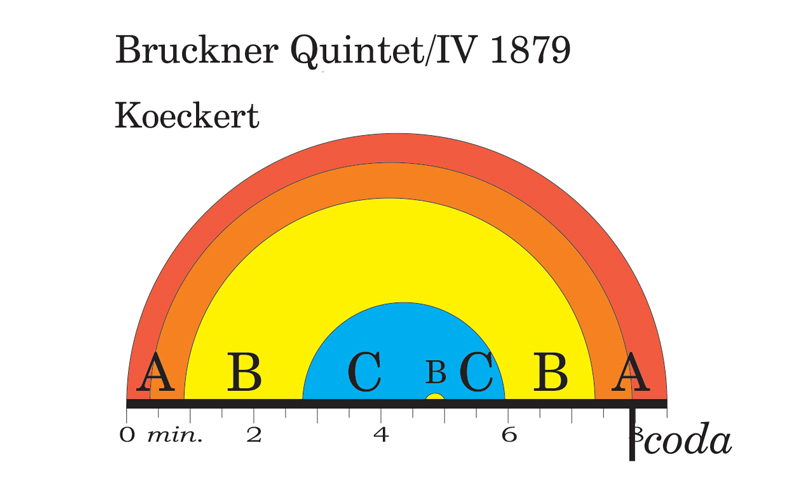

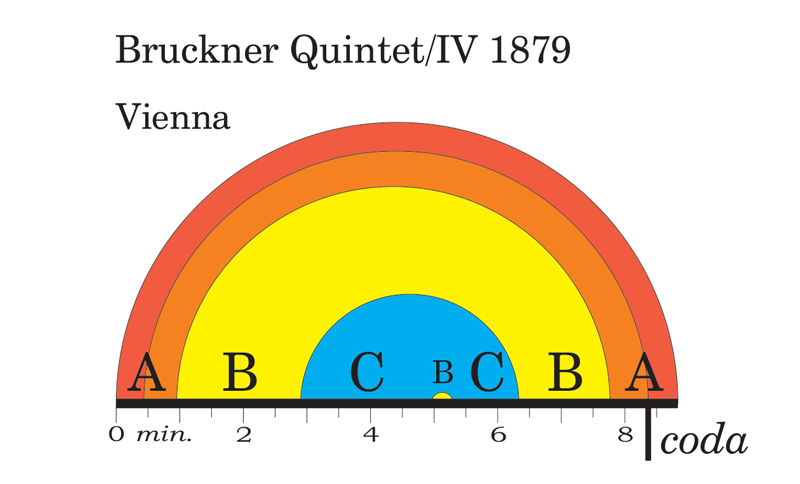

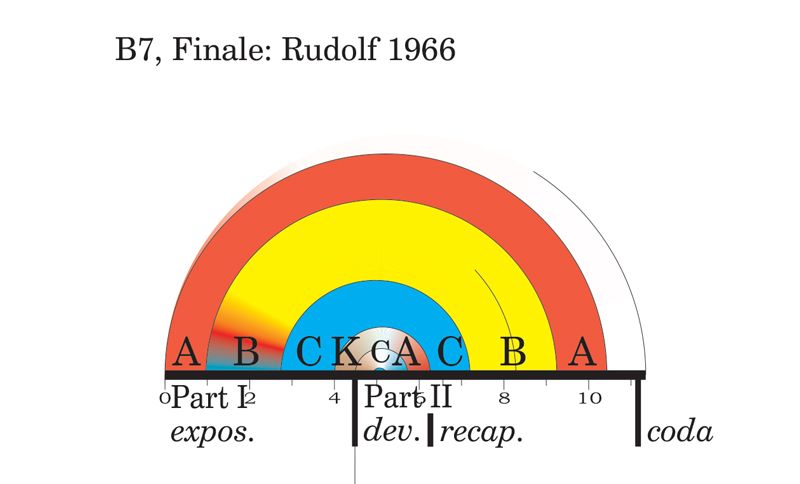
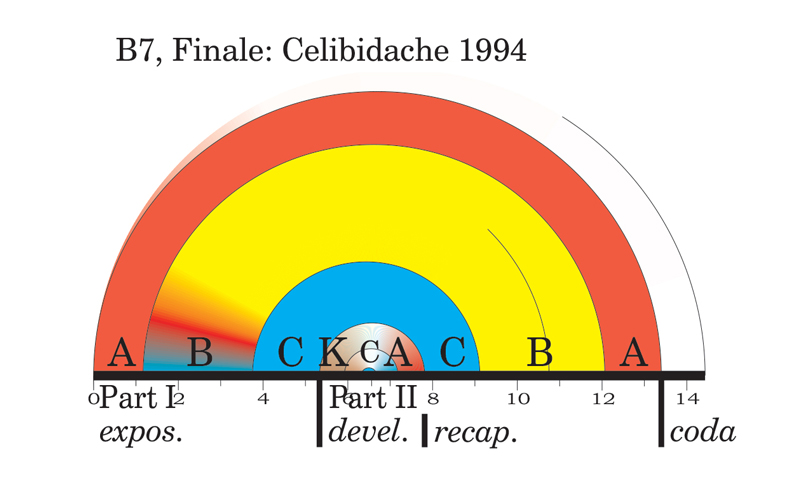



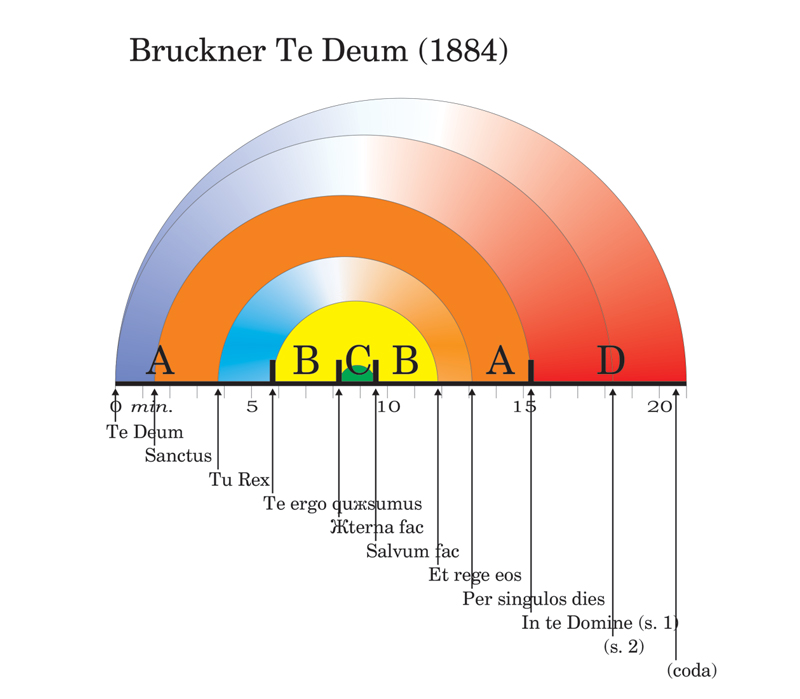
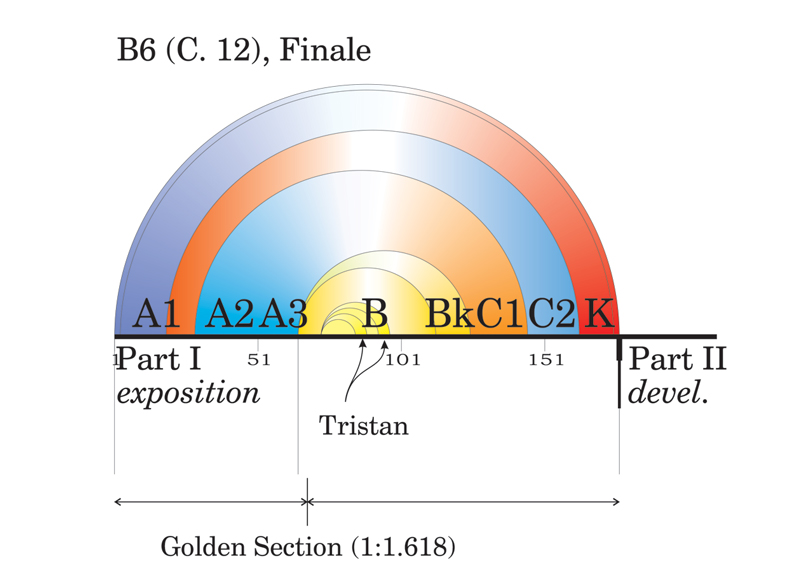
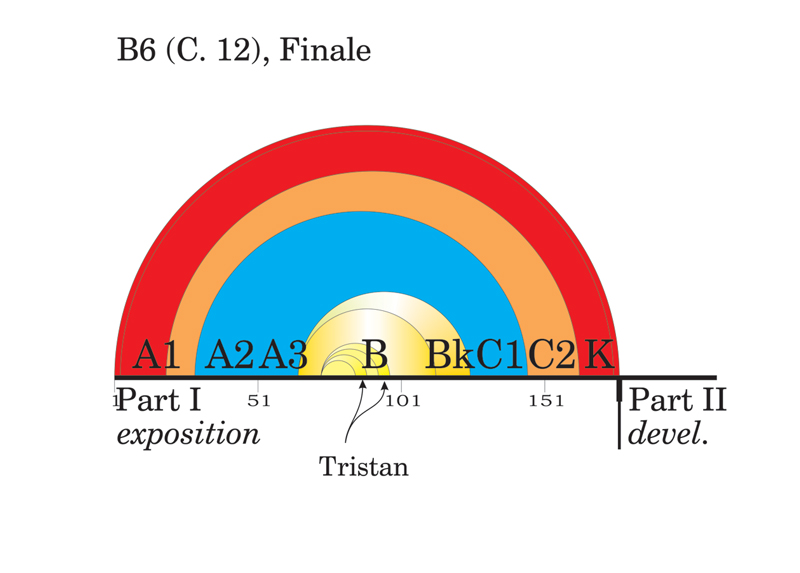
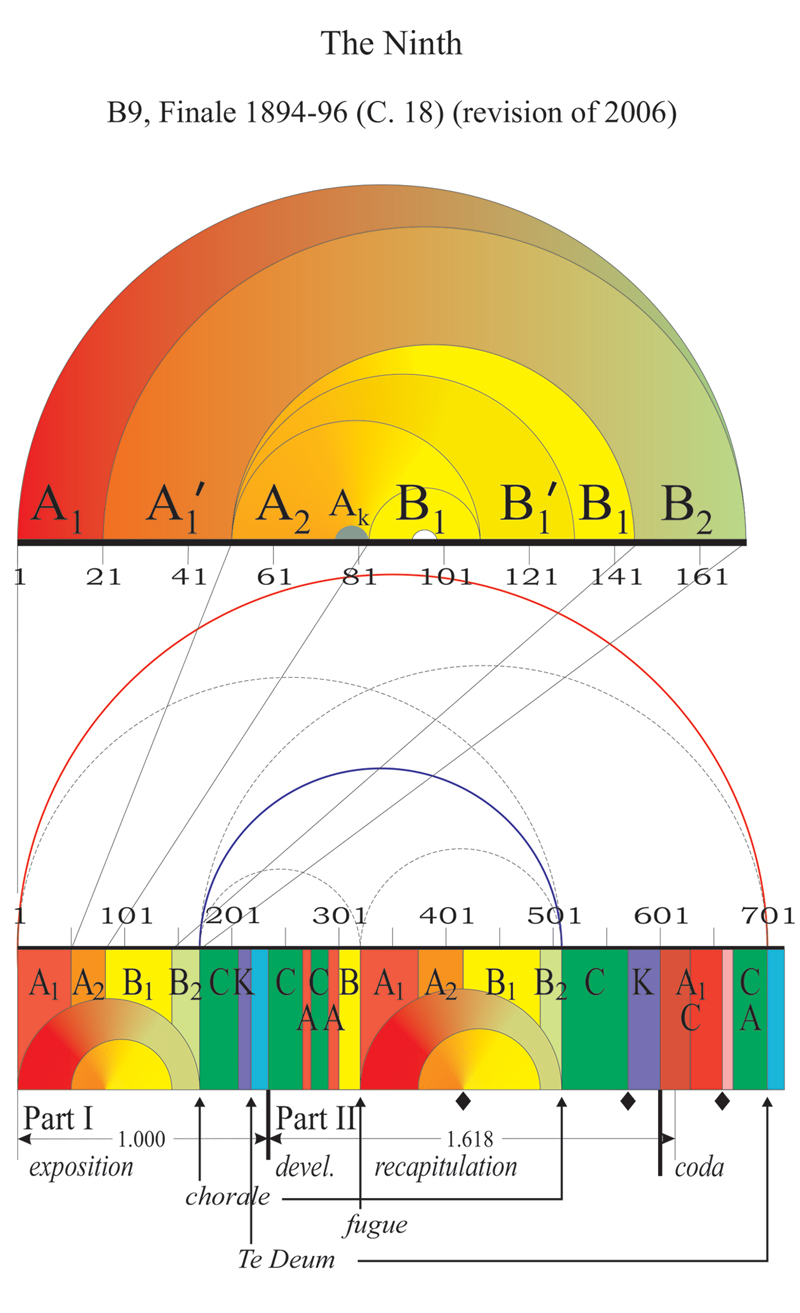
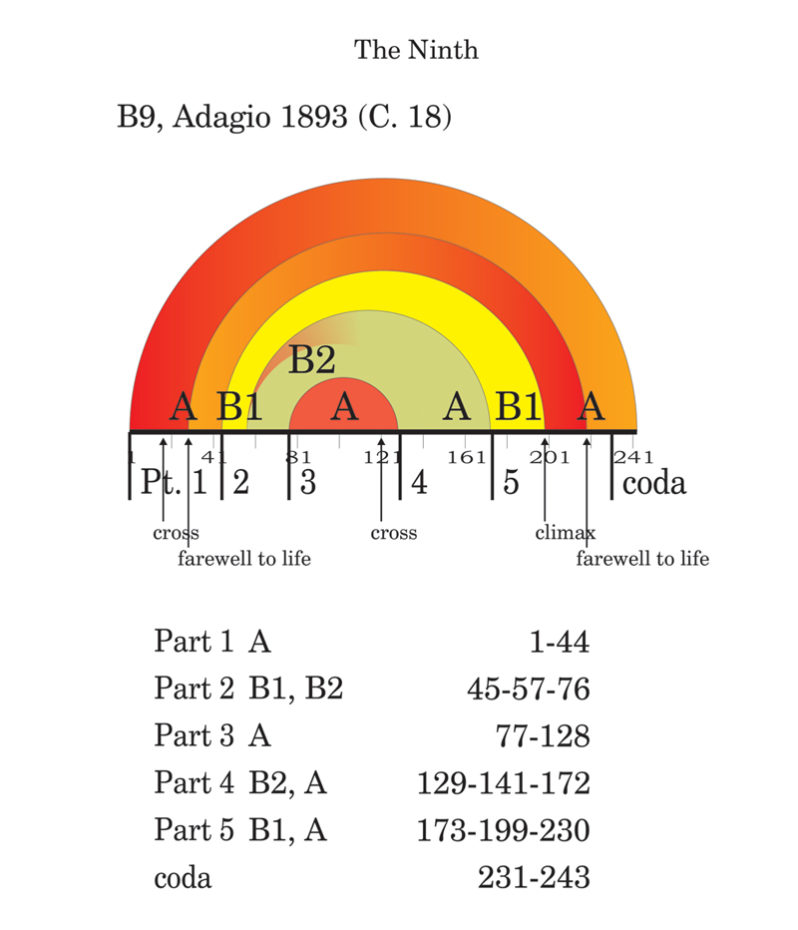
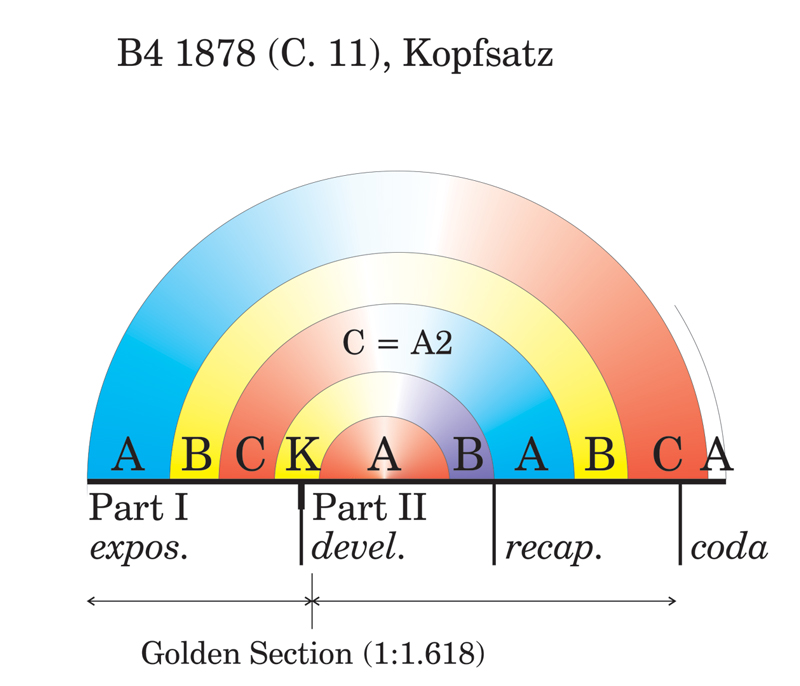
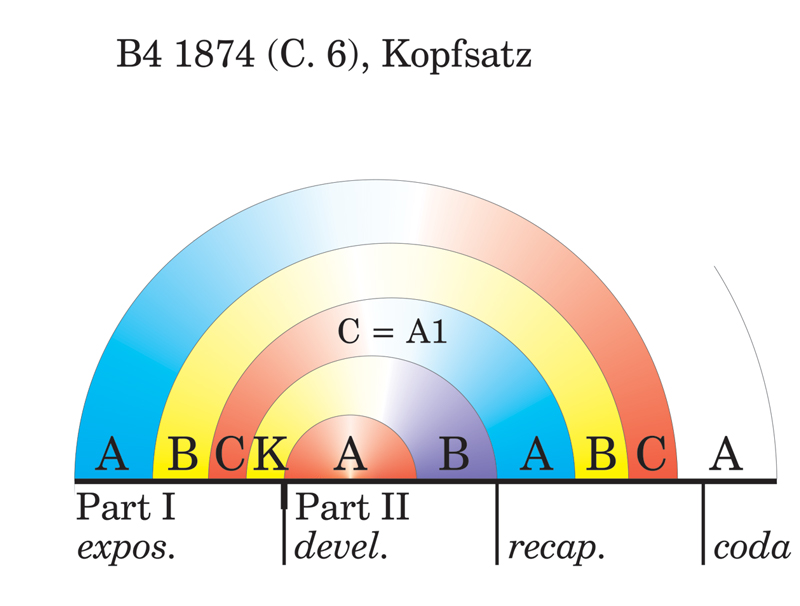
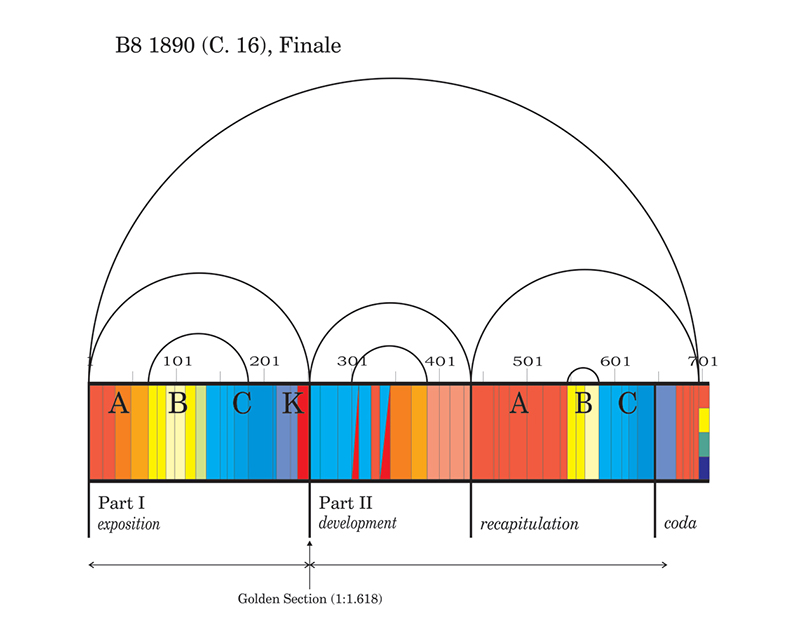

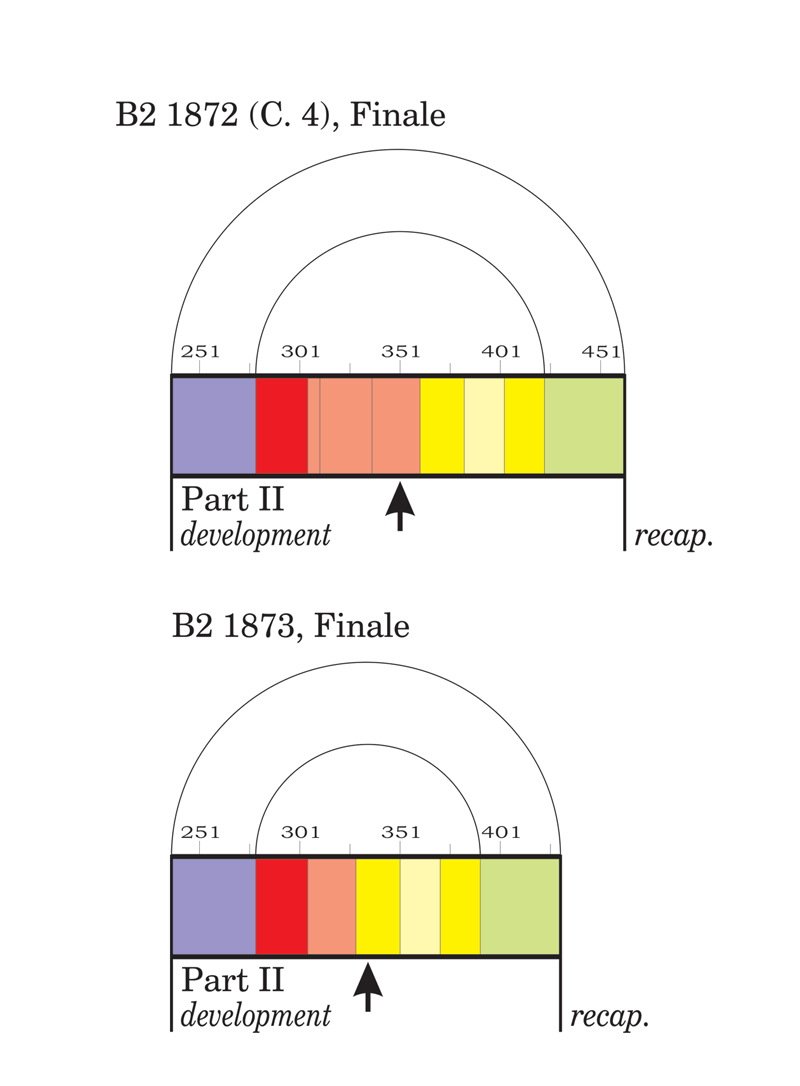
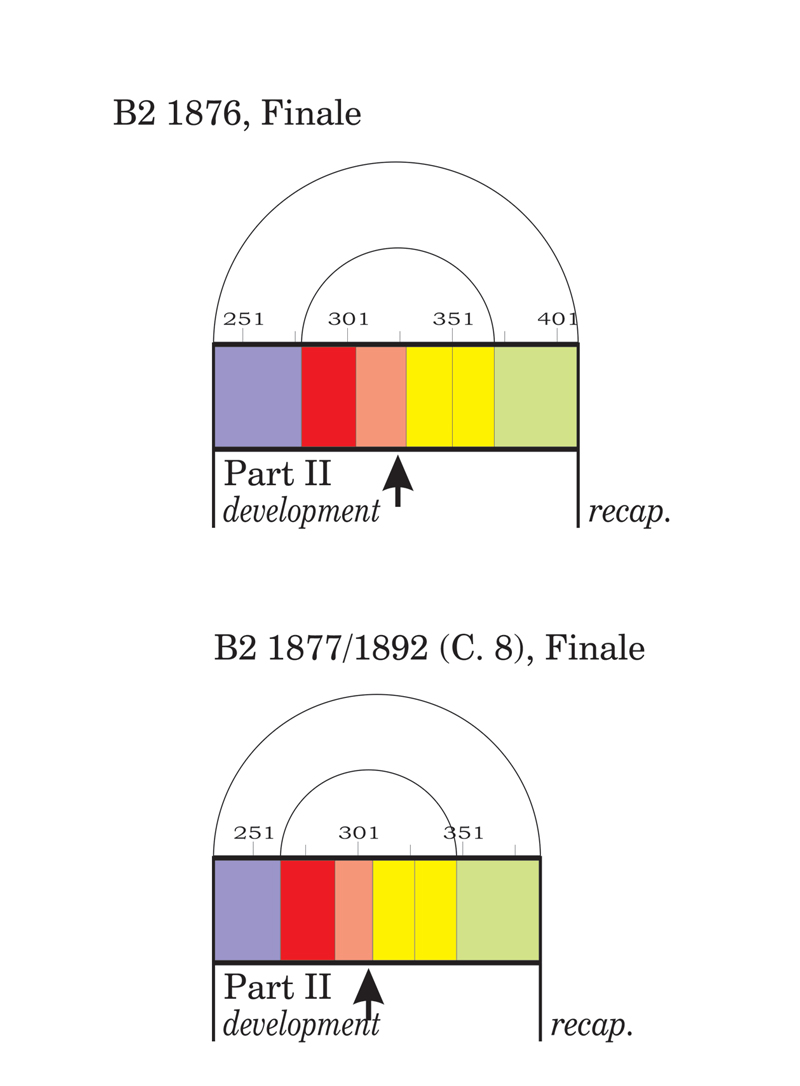
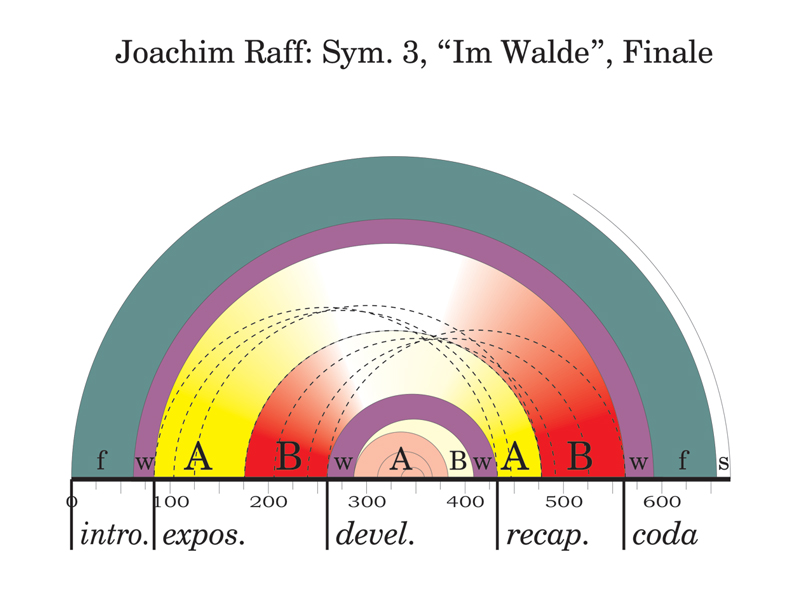

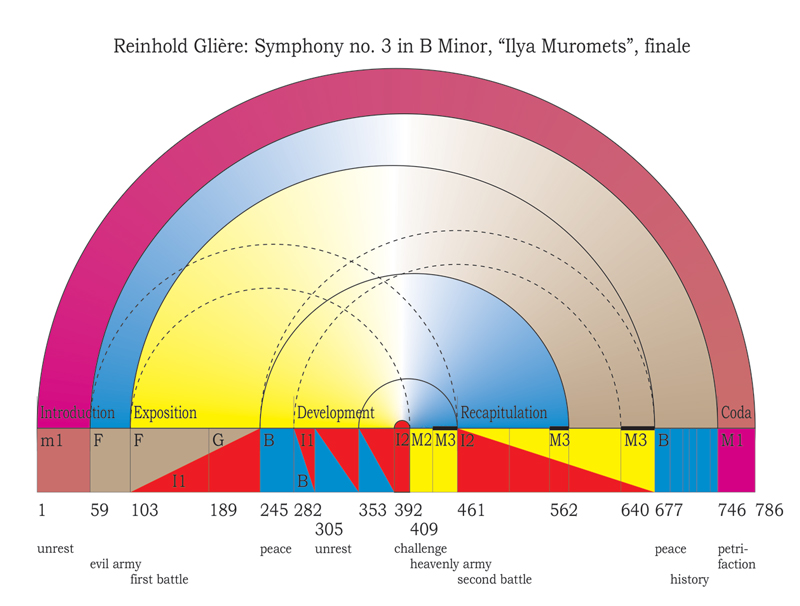
Leave A Comment